Welcome to Malad
Publishedby The Idaho Enterprise



Welcome to the 18th annual Malad Valley Welsh Festival! Everyone is invited to enjoy the Welsh and pioneer traditions featured at the Festival. Come and learn about the history and traditions of Malad Valley!
The 18th annual Malad Valley Welsh Festival will be all day on Friday and Saturday, June 28-29, with a Fireside on Sunday, June 30, 2024. The Festival will include something for everyone, whether or not you have lived in Malad all of your life, recently moved here, or just passing through, whether or not you have Welsh blood, and whether or not you know anything about Wales.
If you had been living in Malad Valley in the late 1800s, you would be well acquainted with Malad’s version of the Welsh eisteddfod. Held in Wales since the 1100s, the eisteddfod is the most prestigious poetry and choral competition in the world. Welsh pioneers brought those traditions with them, and Malad Valley hosted its own eisteddfod – one year in Malad and the next in St. John or Samaria – until World War I. Participants, spectators, and judges came from as far away as Salt Lake City to be part of the Malad Valley eisteddfod.
This year’s Festival will be presided over by Blaine Scott, the “2023 Bard of the Malad Valley Welsh Festival.” Blaine will preside over the Festival from the decorative Bard’s Chair after being led into the Festival during the Opening Ceremony by the Knight of the Welsh Festival. The past Bards have formed a Bard’s Circle, and all will read or recite a poem based on this year’s theme – DRAGONS. At the Finale of the Festival, next year’s Bard will be chaired.
New this year will be Welsh language classes, conducted by John Shaw of Cache Valley. He will provide one-on-one or small group instruction in pronunciation and simple word use in the 2nd Ward Church after the presentations on both days. Once again, pictures can be taken with the Knight of the Festival in the Church.
Poetry readings and competitions for youth and adults began weeks before the Festival with judges reading over 400 poems be-
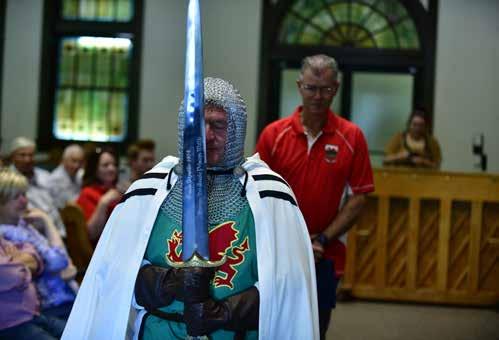
fore determining the youth semi-finalists. All semi-finalists are invited to read their poems at the Festival and vie for cash prizes and the first place crown in each grade category.
Twenty poems have been submitted by accomplished adult poets, and they, too, will be competing for cash prizes and the opportunity to be the “2024 Bard of the Welsh Festival” or to receive the “Patsy Price Scott Poetry Prize.” Several authors will vie for the fiction prize; all stories must have a Welsh or Western theme or main character. The carved “Bard’s Chair” resides in Malad City Hall throughout the year, and plaques engraved with the names of winning Bards, Patsy Price Scott Poetry Prize winners, and fiction winners hang on the wall there.
Similar to the larger Welsh eisteddfod, music is a huge part of Malad’s Welsh Festival. Celtic and Western musicians will perform on the outdoor amphitheater on both days of the Festival. Bards and Nobles, Finch and Magpie, Vanessa Carpenter, Runestone, Ken Currier, and Lee Ivie will be among those providing
toe-tapping music on both days of the Festival. The Malad Valley Men’s Welsh Chorus will perform several times throughout the Festival.
The Friday evening program will open with the Malad Men’s Welsh Chorus welcoming everyone with the traditional Welsh song “We’ll Keep a Welcome in the Valley” (with words altered to fit Malad Valley). Nurture Harps will demonstrate why the harp is the traditional instrument of Wales. Bards and Nobles will perform Celtic songs while in traditional costumes, and local musician Lee Ivie will perform Western music.
Twenty talented young musicians will perform vocal, piano and instrumental numbers at the youth concert on Friday. Adult pianists will perform at the piano ensemble concert on Saturday, concluding with Mack Wilberg’s rousing 2-piano, 8-hand arrangement of “Stars and Stripes Forever.”
Winning youth art will be on display in the 2nd Ward Church throughout the Festival. Youth artists submitted their Welsh-themed works of art before school was out, and judg-
es selected 15 winners and honorable mention recipients from each classroom in Malad Elementary School.
• Opening ceremony with the 2023 Bard being led to the Bard’s Chair by the Knight of the Festival, welcome from the Malad Men’s Welsh Chorus, and introduction to the Festival theme of DRAGONS by Lucie Thomas Washburn
• Presentation by Luke Waldron, who will share an appreciation for traditional Welsh foods
• Presentation by Blaine and Tara Scott, who will share their love for traveling in Wales
• A “Walk Through Wales” to remind those who have visited Wales of the historic sites and beautiful sights of the country and to make those who have yet to visit Wales yearn to make the trip
• Displays of family history trees and census information of early pioneer families that settled Malad Valley
• All-day performances by Celtic and Western musicians on the amphitheater
• Displays of winning youth works of art at the Church
• Welsh language classes
• Opportunity for pictures with the Knight of the Festival
• Quilt show and bake sale at the Coop Building, sponsored by the Oneida Quilters
• Wagon tours of historic routes on North Main and Bannock Street
• LOTS of activities in Samaria (6 miles southwest of Malad), including a scavenger hunt and self-guided tours of histor-
Continued page 2
ic sites and pioneer-era cabins in Malad Valley Heritage Square
• Dunk tank sponsorec by the Malad High School wrestling team
• Displays at the Oneida Pioneer Museum
• Tours of historic 140-year-old Presbyterian Church
• Huge book sale at the Oneida County Library, sponsored by the Friends of the Library
• LOTS of food and craft booths, including the Taste of Wales booth (sponsored by the Malad High School FCCLA and Malad Valley Heritage Square) and the Welsh Country Store
• Display of model of USS Idaho
• LOTS of activities for kids with face painting, castle and dragon coloring, and Welsh games, sponsored by the Malad After-School Program
• Youth poetry reading and competitions with winners in each age category being crowned
• Youth concert, featuring pianists, vocalists, and instrumentalists
• Evening concert, featuring harp, Celtic, and Western music
• Heritage games played by Welsh pioneer children as they left Wales and journeyed across the Plains to Malad Valley, sponsored by the Malad Middle School MathCounts Team
• Piano ensemble concert
• Bard’s Circle poetry, adult poetry reading, announcement of fiction winners, presentation of poetry prizes, including “Chairing of the 2024 Bard”, and gymanfa ganu (sing-along) at the finale event
• Presentation by Bob Crowther on how the Welsh Bible saved the Welsh language; displays of Welsh Bibles; refreshments
The Malad Valley Welsh Festival will have something for everyone, whether or not you have Welsh heritage! Admission is free although some activities may have a small charge. The Welsh Festival cannot be called an eisteddfod (very few druids reside in Onei-

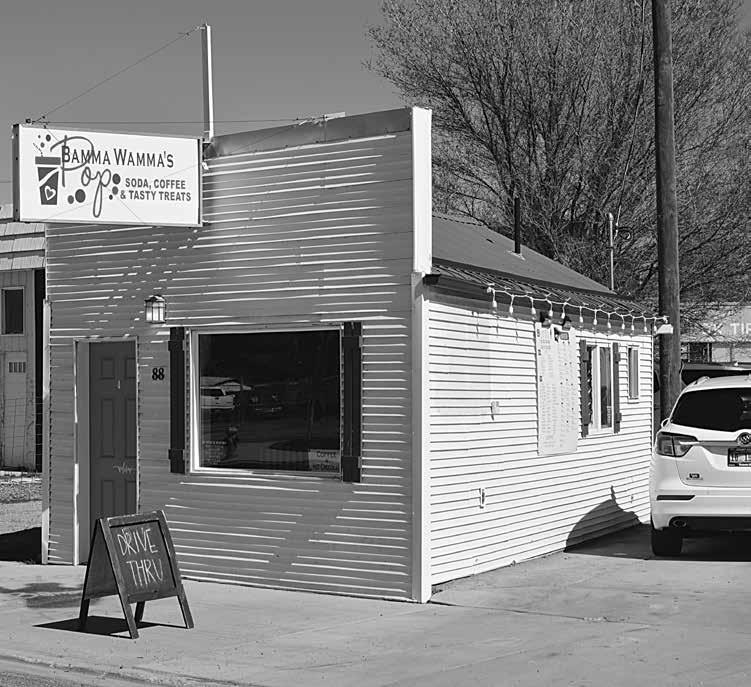
da County), but it is becoming an opportunity to celebrate Malad Valley’s pioneer heritage.
The Festival is partially funded by the Idaho Humanities Council, Idaho Commission on the Arts, Blue Cross of Idaho Foundation, Bistline Family Foundation, Malad Valley Welsh Society, Hess Pumice Products,
Nell J. Redfield Memorial Hospital, Thomas Market, and other local businesses, families, and individuals.
The schedule of events is printed in this paper and on the website: www.welshfestival.com.
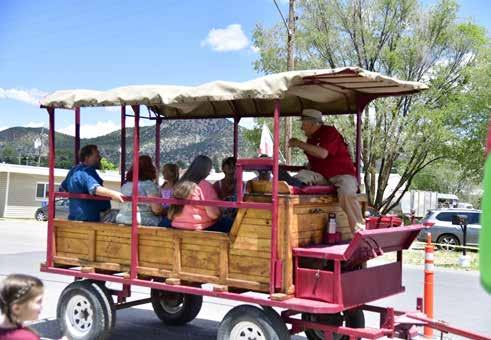


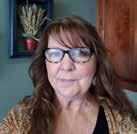



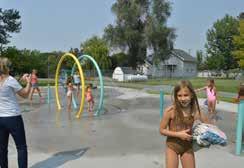
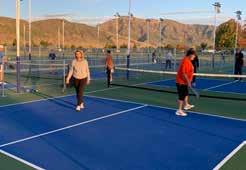
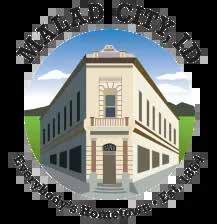
Friday and Saturday, June 28 – 29, 2024 Sunday, June 30, 2024 (Sunday evening program only)
www.welshfestival.com 208-766-4010
FRIDAY, JUNE 28
9:00 a.m. – 5:00 p.m. (Parking Lot)
Exhibit of the U.S.S. Idaho
9:15 a.m. (Church Chapel)
Opening Ceremony with Blaine Scott, 2024 Welsh Festival Bard Lucie Thomas Washburn, “The Welsh Dragon: A Symbol for a Nation”
9:00 a.m.-5:00 p.m. (Church Cultural Hall)
Photo Displays - “A Walk through Wales”
Family History Displays
Youth Art Exhibit (RS Room)
10:00 a.m.-Noon. (Church Chapel)
Presentations:
10:00 a.m. Luke Waldron: “A Culinary Journey through Wales: Exploring
Traditional Welsh Cooking”
11:00 a.m. Blaine and Tara Scott: “Traveling through Wales”
10:00-3:30 p.m. (Amphitheater)
Welsh/Celtic Musical Entertainment
10:00 a.m.-3:00 p.m. (City Park)
Kids’ Activities (sponsored by Malad After-School Program)
Dunk Tank (sponsored by the MHS Wrestling Team)
10:00 a.m.-4:00 p.m. (Library)
Book Sale (sponsored by Friends of the Library)
10:00 a.m.-5:00 p.m. (Co-op Downtown)
Quilt Show and Bake Sale (sponsored by Oneida Quilters)
11:00 a.m.-5:00 p.m. (Museum)
Oneida Pioneer Museum open
11:00 a.m.-5:00 p.m. (Samaria)
Scavenger Hunt, Tours of Pioneer Cabins at Heritage Square, Blue Goose open
11:00 a.m.-6:00 p.m. (City Park)
Welsh Festival Country Store, “Taste of Wales,” and Food and Craft Booths open (Booths may open earlier and stay open later.)
Noon – 4:00 p.m. (Church Chapel Area)
Welsh Language Class/Pictures with Knight of the Festival
1:00-2:30 p.m. (Church Chapel)
Student Poetry Reading/Competition
Recognition of Youth Art Competition Winners
1:00-4:00 p.m. (begin in City Park)
Wagon Tours of Historic Sites in Malad 1:00 – 4:00 p.m. (Presbyterian Church)
Tours of Historic Church; Refreshments
3:00-4:00 p.m. (Church Chapel)
Youth Music Concert
6:00-7:30 p.m. (Church Chapel)
Concert of traditional Welsh harp music and Western pioneer instrumental/choral music
SATURDAY, JUNE 29
6:00 a.m. (Summit to Devil Creek Reservoir)
Dragon Half and Quarter Marathon (sponsored by MHS Cross Country Team)
9:15 a.m. (Church Chapel)
Opening Ceremony with Blaine Scott, 2024 Welsh Festival Bard
Lucie Thomas Washburn, “The Welsh Dragon: A Symbol for a Nation”
9:00 a.m.-5:00 p.m. (Church Cultural Hall)
Photo displays of “A Walk Through Wales”
Family History Displays
Youth Art Exhibit (RS Room)
10:00 a.m.-Noon (Church Chapel)
Presentations:
10:00 a.m. Luke Waldron: “A Culinary Journey through Wales: Exploring Traditional Welsh Cooking”
11:00 a.m. Blaine and Tara Scott: “Traveling through Wales”
10:00 a.m.-2:00 p.m. (City Park)
Heritage Games (sponsored by MMS MathCounts Team)
Dunk Tank (sponsored by MHS Wrestling Team)
10:00 a.m.-3:00 p.m. (Library)
Book Sale (sponsored by Friends of the Library)
10:00 a.m.-3:00 p.m. (begin in City Park)
Wagon Tours of Historic Sites in Malad 10:00 – 3:00 p.m. (Presbyterian Church)
Tours of Historic Church; Refreshments
10:00-3:30 p.m. (Amphitheater)
Welsh/Celtic Musical Entertainment
10:00 a.m.- 5:00 p.m. (Co-op Downtown)
Quilt Show and Bake Sale (sponsored by Oneida Quilters)
10:00 a.m.-6:00 p.m. (City Park)
Welsh Festival Country Store, “Taste of Wales,” and Food and Craft Booths open (Booths may open earlier or stay open later.)
11:00 a.m.-5:00 p.m. (Museum)
Oneida Pioneer Museum open
11:00 a.m.-5:00 p.m. (Samaria)
Scavenger Hunt, Tours of Pioneer Cabins at Heritage Square, Blue Goose open Noon – 4:00 p.m. (Church Chapel Area)
Welsh Language Class/Pictures with Knight of the Festival
1:00 – 2:00 p.m. (Church Chapel)
Piano Ensemble Concert
2:30 – 4:00 p.m. (Church Chapel)
Bards’ Circle Poetry
Adult Poetry Reading
Announcement of Fiction Winner
Presentation of Poetry Prizes
Chairing of 2025 Welsh Festival Bard Finale Gymanfa Ganu (sing-along)
SUNDAY, JUNE 30
5:00 p.m. (Malad LDS 2nd Ward)
Presentation by Bob Crowther: “The Role of the Bible in Preserving the Welsh Language”
Displays of authentic Welsh Bibles
Gymanfa Ganu (sing-along) Refreshments
Remove yourself from your daily rush and take a stroll back in time. Samaria, about nine miles southwest of Malad, was once the largest town in the Malad Valley. Settled in 1868 by Welsh immigrants, the town did well until the railroad was routed through Malad. After that, the primary businesses developed around the railroad terminal, and Samaria remained a farming community.
If you are looking for something to do for a few hours, the Samaria driving tour may be just the thing for you. A number of historic buildings are in the area, and the district is on the National Register of Historic Places. A fun way to learn much about the early history is to pick up your copy of the Samaria Early History Driving Tour booklet from local businesses Malad Valley Heritage Square or the Blue Goose. This 58-page booklet is full of historic photographs and pioneer stories.
A must visit is the historic “Blue Goose” country store. This building has been part of the community’s history for many years, opening its doors for business around 1900 as a furniture store. It was later purchased and became the community’s Candy Store and Ice Cream Parlor and later a pool hall for many years. In 1998 the building was relocated to the Samaria Centennial Park and is now operated as a country store ran
by community volunteers. A variety of items are for sale, including candy, pop, souvenirs, novelty items, sweatshirts and T-shirts, hats, aprons, cookbooks, and community history books.
We welcome you to come and enjoy the Samaria Centennial Park, beautifully kept by the Samaria Recreation District. The Samaria Centennial Park is a perfect location for your next family outing with a nice pavilion, playground, ample of room for camping and RV trailers. Join the family fun at the annual Samaria Days celebration the third weekend of July each year. Group reservations for family reunions or other events can be made by calling The Blue Goose during regular business hours at 208-766-5381.
A new and unique venue for families and individuals is the Malad Valley Heritage Square. The Malad Valley Heritage Square was dedicated on May 11, 2018 by Elder Neil L. Andersen of the Quorum of the Twelve Apostles of the Church of Jesus Christ of Latter-day Saints. The Square was created to honor, perpetuate, and preserve the legacy of the Welsh Pioneer Heritage of the Malad Valley. Features of the Heritage Square include three Welsh pioneer cabins; the Thomas John Davis, Samuel Deer Davis, and the John Jones Williams.
The Thomas John Davis cabin, birthplace of Olive Davis Osmond, mother of
the famous Osmond singers and entertainers, was dedicated in May 2010 by seven of Olive’s son’s, Virl, Tom, Merrill, Jay, Alan, Donny and Jimmy. Olive was born May 4, 1925, in the small cabin and grew up in Samaria. The cabin has become a museum to honor Olive Davis Osmond and the Davis family. The Samuel Deer Davis cabin is currently being restored with an original wood slat roof and being chinked with a mixture of clay and straw. S.D. Davis became a prominent community member but is most notably known for his test oath case, which went all the way to the United States Supreme Court. The John Jones Williams cabin, one of the first five homes built in the Malad Valley in 1864, is the oldest standing structure in the valley. Your Heritage Square visit also includes The Welsh Experience Exhibit and the Welsh Children’s Farm where kids can enjoy many adorable Welsh animals including sheep, ponies, chickens, and ducks. A great place for a family outing! The Malad Valley Heritage Square is open Memorial Day through Labor Day for self-guided tours. For guided tours and special events contact samariacommunity@gmail.com or call 208-380-3522.
The Samaria Cemetery abounds with stories. One of the most bizarre being that of “Uncle Ben” and his buried leg. Before Ben Waldron became a merchant, he was doing

some farming. In the fall of 1878 when Ben was 24 years of age he was harvesting with a horse-powered thresher. Somehow his leg got caught up in one of the rods in the machinery and was severely injured. Ben was rushed to the hospital where he begged the doctor for several days to save his leg. However, the leg could not be saved. Ben having quite a sense of humor asked that the leg be buried, which was done. Ben complained of intense pain for weeks following the amputation. He asked if his leg was buried crooked. Those who helped bury it including Ben’s brother, Levi, said yes. Ben insisted that his leg be dug up and straightened. Levi did as his brother asked. After the leg was straightened out, Ben’s pain went away and he never complained about having the pain again. The burial plot in the Samaria Cemetery is marked with its own gravestone on the east side of the cemetery inscribed “B.W. October 30, 1878”. Just look for the stone with the leg on it. Ben died many years later in 1914 and his body is buried on the west end of the cemetery.
One thing is for sure, a trip to Samaria will not disappoint! We look forward to seeing you there!
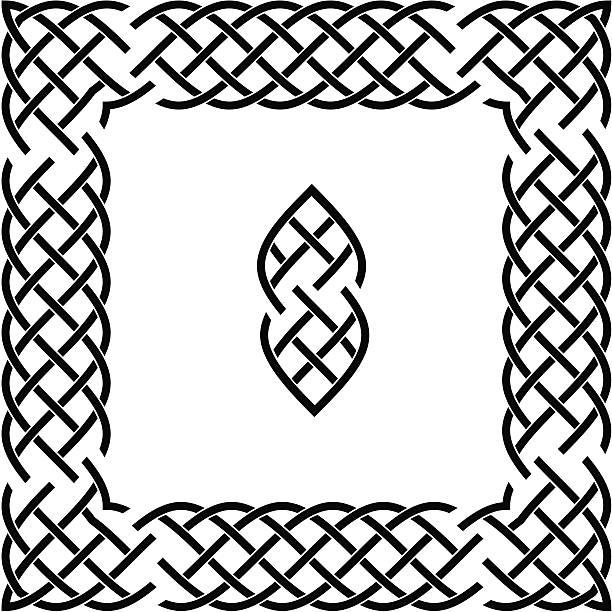




The Local Folks’ Favorite Place To Dine!
65 North Main • Malad • 766-4327
Exit 13 To Center of Town
Serving Lunch & Dinner
Steaks, Seafood, Fantastic Burgers & Sandwiches, alad Bar, & the Best Chicken Fried Steaks Anywhere! ~ Dining For The Entire Family ~


Hours: Tues. - Thurs.: 11:00 a.m. - 8 p.m. Fri. & Sat.: 11:00 a.m. - 9:00 p.m.
Closed Sun. & Mon
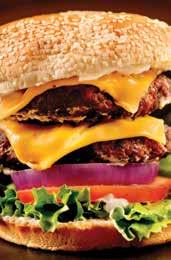


MALAD VALLEY WELSH FESTIVAL SUNDAY FIRESIDE
June 30, 2024 at 5:00 in 2nd Ward Chapel
“How the Bible Saved the Welsh Language” by Bob Crowther
Refreshments will be served.


Old Fashioned Hospitality
Play the Idaho Lottery Here!

Friday, June 28, and Saturday, June 29 in the Knight’s Castle in the 2nd Ward Church 9:30 – 10:00 (after Opening Ceremony) Noon – 1:00 (after Presentations)
Friday Only 2:30 – 3:00 (after Youth Poetry Reading) Saturday Only 4:00 – 4:30 (after Finale)
Voted Idaho’s Best Library
31 North 100 West, Malad, 208-766-2229


Monday: 11:30 a.m. - 6:00 p.m. Tuesday - Friday: 11:30 a.m. - 5:30 p.m.
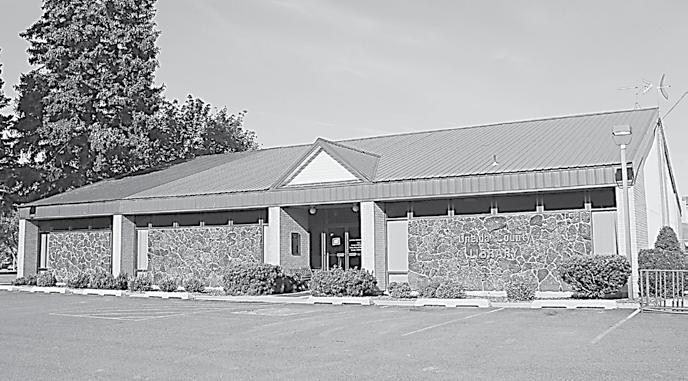
Preschool and Mom & Tots Story Hour
Every Tuesday @ 12:30 – 1:30
SUMMER READING
June 4 through July 16 Closed July 4

Every Tuesday @ 12:30 p.m. in the park E-book and E-audio now available

The First Presbyterian Church began in 1877 when the people invited the pastor of the Corinne Presbyterian Church to hold Sunday School services here. The church was formally organized in 1884 when the current church building, the oldest existing church building in Malad, was completed. In 1878 the original Presbyterian Mission School was started; it was the only school in Malad until the first public school opened in 1908. The mission school ended at that time.
The historic church bell was built in Troy, New York, shipped to Malad, and installed in 1884. It may be the oldest bell in Idaho. This bell tolled for over a century including warning of the devastating 1908 flood, on V-E day, and again on V-J day. The sole function of the bell today is to call worshippers to church.
Worship services are still held in the historic building located on 7 South Main Street (next to the courthouse on the hill behind Allen Drug) in Malad on Sunday at 11:00 a.m. Visitors are welcome. For more information, please contact Toni Werk at 702-525-2845.
The St. Paul’s Catholic Mission Church, part of The Good Shepherd Catholic Commu-
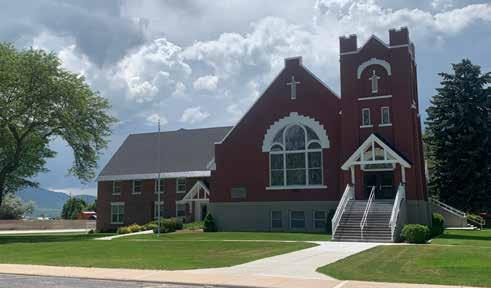
nity based in Soda Springs, Idaho, conducts Catholic Mass every Saturday in Malad at 3:00 p.m. at the church located at 233 Samaria Lane. For more information, please contact Art Martinez at 208-417-9586. All are welcome.
In April 1865 – just a year after Malad
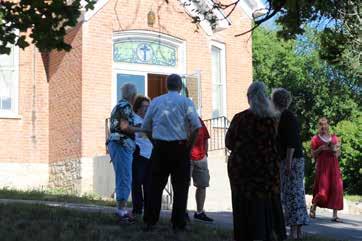
Valley started to be settled – the first Malad Branch of the Church of Jesus Christ of Latter-day Saints was organized with Daniel Daniels as presiding elder. The first meetinghouse was the Church of the Seven Spires, which was built in 1867 and demolished in the 1920s. The Malad Ward was formed in 1877.
The Church of Jesus Christ of Latter-day Saints has three buildings in Malad City: the Stake Building located at 1250 N. 1100 W. (on way to St. John), the 2nd Ward Building
located at 20 S. 100 W. (next to the Malad City Park), and the old Stake Building at 400 N. 200 W. (across from the Malad Elementary School). Three wards meet in each of the buildings at the following times: Sacrament Meeting at 9:00 a.m., 10:30 a.m. or 12:00 p.m.; Primary and Sunday School/Priesthood and Relief Society at 10:00 a.m., 11:30 a.m. or 1:00 p.m. The Holbrook Ward meets in its building in Holbrook with Sacrament Meeting at 10:00 a.m. and Sunday School/Priesthood/Relief Society and/or Primary following.
Victory Baptist Church, affiliated with the Southern Baptist Convention, started in a local resident’s home in 1992. The location of the worship service moved three times until 2010 when the congregation finally got its own church building located at 448 S. Main Street.
Pastor Jack Harwell and the congregation invite all to join with them for their Sunday morning Bible study held from 10:00 a.m. to 10:45 a.m., Sunday worship service from 11:00 a.m. until 12:00 p.m., Sunday evening Bible study from 7:00 p.m. to 8:00 p.m., and Wednesday night prayer meeting from 7:00 p.m. until 8:00 p.m. For more information, please contact Pastor Harwell at 208-766-4286.








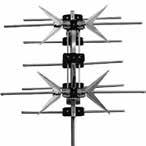







Oneida County waterways are known to be among the best in Idaho and are open all year-round.
Idaho's Free Fishing Day is an annual event held the second Saturday every June. For 2023, the free fishing day will be Saturday, June 10. All anglers, residents and nonresidents, can celebrate the day by fishing Idaho's waters without a license. If you've never been fishing, Free Fishing Day is also a great day to learn. Fish and Game personnel and volunteers set up several free events at local fishing waters throughout the state to help first-timers discover the joys of fishing.
Unless otherwise specified below, at all fishing spots in Oneida County, trout limit is six, all species combined, including brown trout, lake trout, cutthroat trout, rainbow trout, and trout hybrids.
All seven Oneida County reservoirs were planted in 2023 and some have already been planted for 2024 and are reflected in this article.
Please check with the Idaho Fish and Game website for special rules in 2024 for further details.
Daniels Reservoir is designated as ‘trophy trout waters’ yielding good trophy-size fish. Daniels has one of the most dependable water supplies in the county. It is stocked by IDFG with catchable-size kamloops rainbows. Special fishing restrictions apply at this reservoir. Fishing with bait is not allowed. Artificial flies and lures, and barbless hooks can be used. Only one line is allowed when ice fishing. Trout limit is two and none under 20 inches in size can be taken.
On June 1, 2023, Daniels was stocked with 20,066 Rainbow trout (less than 6 inches).
Besides fishing, Daniels offers a quiet, out-of-the-way place to camp. There is a boat ramp and dock and toilets are available.
Deep Creek Reservoir currently only allows bank fishing. No boats or watercraft of any
kind are allowed on the reservoir because of the invasive mussel threat.
Of all the reservoirs in the county, Deep Creek is the most subject to drought because it is almost totally reliant on spring runoff to fill. However, even in drought years when water levels are down, fishing is generally good. As a result of heavy spring precipitation, the levels are high this year.
Deep Creek has been planted with rainbow trout to go along with the native cutthroat that are already there. The bag limit is six trout total, and only two can be cutthroat and there are no bait restrictions.
Open year around, there is a fishing restriction between May 1 and June 14, as it is closed from the mouth of First Creek for a radius of 50 yards into the reservoir to protect the native cutthroats preparing for their spawning runs.
Deep Creek was last stocked in May of 2024, with 1,000 Rainbow trout (6+ inches).
(Family Fishing Waters)
Located north of Malad City, Devil Creek is considered family fishing waters.
Well-developed camping facilities are provided along the western shores of the reservoir and it is equipped with boat docks, ramp, toilets and is ADA accessible. Devil Creek is also open to water skiing.
Devil Creek provides some of the best trout fishing in this region. This typical southeast Idaho reservoir is stocked heavily with catchable-size rainbow trout. Most anglers fish from boats or on the bank around the dam.
Devil Creek is planted with two species of rainbow trout and Kokanee salmon. Largemouth bass are also present, and if you are lucky, you may catch a native cutthroat trout. In 2024, the reservoir was stocked in May with 7,038 kokanee late spawners. In June of last year, the reservoir was stocked with 2,178 Rainbow trout (6+ inches); 7,000 Kokanee (less than 6 inches); in September with 7,629 Rainbow trout (6+ inches); 5,150 Rain-
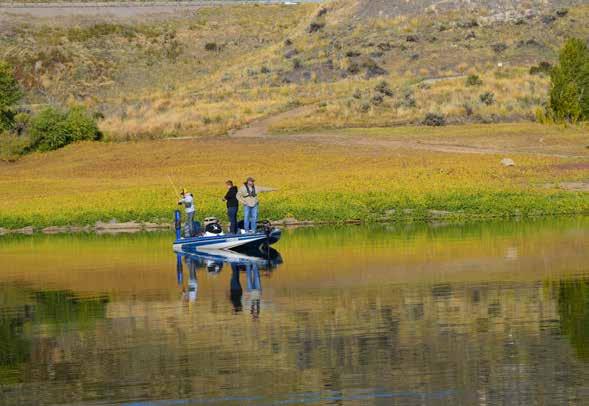
bow trout (6+ inches) and in November with 309 Rainbow trout (6+ inches).
Fishermen may use Devil Creek Reservoir year round, but should be aware of the fishing restriction from the mouth of Devil Creek for a radius of 50 yards into the reservoir between May 1 and June 14. This restriction is there to protect the native cutthroat that are staging for their spawning runs. Bag limit is six trout and only two can be cutthroat.
(Family Fishing Waters)
Just a small family fishery on the northern outskirts of Malad City, Crowther’s Reservoir is stocked by IDFG annually with catchable size rainbow trout. Largemouth bass and bluegill are also present. General fishing seasons, dates, possession limits and rules apply to its waters. Six trout and six bass are allowed with no special rules. There is no limit on other species, and year round fishing is available.
Crowthers was last stocked on May 4, 2024, with 3,300 Rainbow trout (6+ inches).
There is no boat dock or ramp at Crowther’s Reservoir. Toilets are available.
Pleasantview is actually two bodies of water, but the majority of fishing is done on the upper body. Because it is the most shallow, local fishermen say this reservoir is better if fished early, as the water will warm up when the summer grows hot, then the fish seem to soften.
IDFG plants the waters with rainbow trout every year. Records indicate that Upper Pleasantview was last stocked in May, 2024 with 1,500 Rainbow trout (6+ inches). Lower Pleasantview has not been stocked since 2015. There are no special restrictions. A boat ramp is available but no other facilities.
Located in eastern Oneida County, Weston Reservoir is a favorite fishing spot for locals as well as for out-of-state fishermen. With year round fishing regulations, there are usually fishermen on its shores winter and summer. No fishing is allowed from boats or rafts; however float tubes are allowed. Among the locals, the joke is: “If all else fails, the perch are probably biting at Weston.”
Usually, all it takes is a can of worms and a little time to be successful here.
Though known for yellow perch, there are also rainbow trout, largemouth bass and bluegill in its waters. Stocked annually by IDFG, fishing at Weston is a pleasant experience. Perch and bass reproduce on their own. From April to May of 2024, Weston was stocked with a total of 3,000 Rainbow trout (6+ inches).
Fishing for bass is catchand-release only from January 1 to June 30. There is a restriction on bass between July 1 to December 31, with a bass limit of 2 and none between 12 and 16 inches.
For those interested in catfishing, the Little Malad River was stocked on July 24, 2019 with 1,980 Channel Catfish (6+inches).
INFORMATION - For further information regarding fishing rules and regulations, please contact Idaho Fish and Game Officer Kyle Christiansen at 208851-1957, or call Idaho Fish and Game at 208-232-4703, or obtain information at www.fishandgame.idaho.gov.
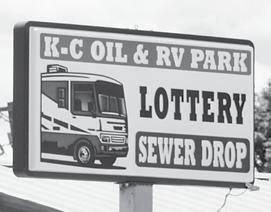
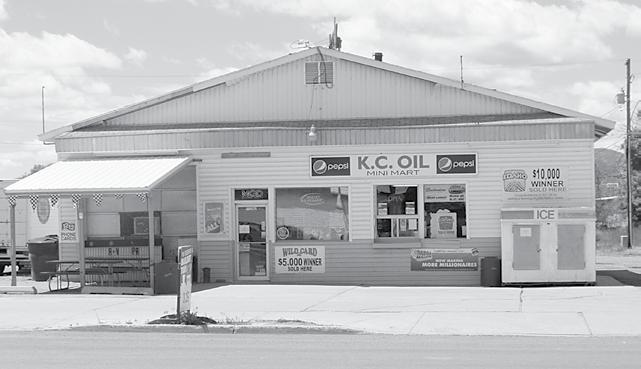

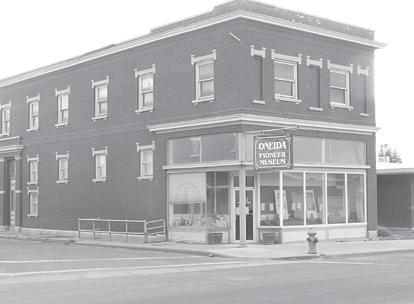
Musical Instruments • Journals
Clothing & Hats • Military Display
Hours: Tuesday through Saturday 1:00 p.m. - 5:00 p.m. Closed in Winter Months
Admission Free Donations Accepted

For the enjoyment of Oneida County residents and visitors to Malad, two parks are available for picnics, playing ball and walking. All parks are equipped with restrooms, picnic tables and water. The swimming pool has a small adjacent park convenient for small parties.
The Malad City Park, 41 South 100 West, is located adjacent to the Oneida County Free Library. A children’s playground is included in the park with a variety of children’s outdoor toys and a large sandlot. New this year will be a large pickleball complex, which will open for the fourth of July.
For parties and picnics, a large pavilion with many tables is available. A smaller pavilion has been added in the Greenbelt.
The park has three ball fields, including a small one near the children’s playground for the enjoyment of visitors and residents who reserve the park and pavilion, unless Little League games are being played.
A splash pad was constructed in 2021 and is now available to the public. It will be located on the northwest side of the main pavilion. The splash pad is at the northwest side of the complex, and is open during daytime hours.
New horseshoe pits have been con-
structed just south of the new pavilion in the area of the small walking path. Ping pong tables are also available in this area. To obtain paddles and balls, contact the Malad City office at 208-766-4010. Along this same area is an outdoor basketball court, and a new pickleball court opened in 2023! The fitness area will be open to all residents, but is being built mainly for senior members of the community.
A walking path adjoins the park where people can walk, rollerblade, or ride bicycles. Walking dogs on a leash is requiredplease clean up after your pets!
Electricity is available at the pavilions.
Those who reserve the Malad City Park are encouraged to inquire at the Malad City office if any ball games are scheduled for the day they want the park. Reservations can be made for this park with the Malad City Office, 208-766-4010.
Malad Pioneer Park is located on 500 North and 300 West. Softball fields are located adjacent to the park at Harding Field. Electricity is available. Reservations can be made with Oneida County School District office at 208-766-4701.
LeGrande Aqua Plunge, a storefront swimming pool, is located at 77 Main Street.
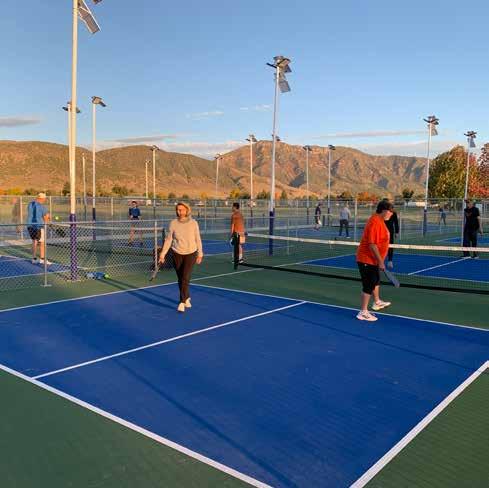

It is open for the summer for lap swimming, water aerobics, swimming lessons and open swimming. The pool normally the first week-
end after high school graduation and closes the weekend before school starts in August.
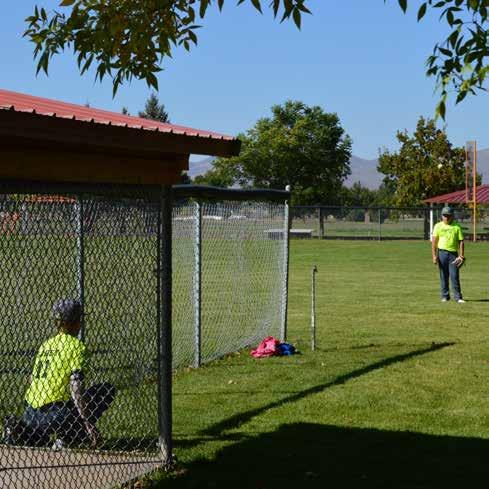
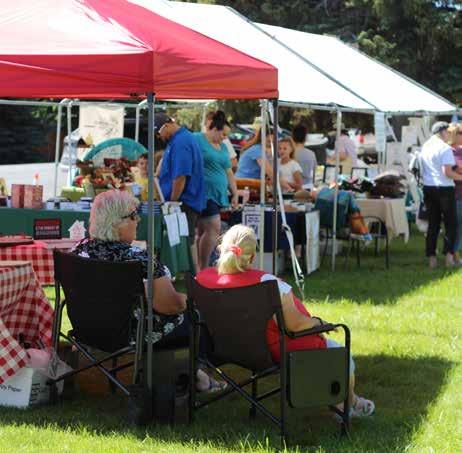
(as of 6/6/2024)
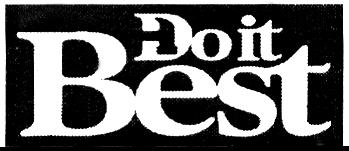
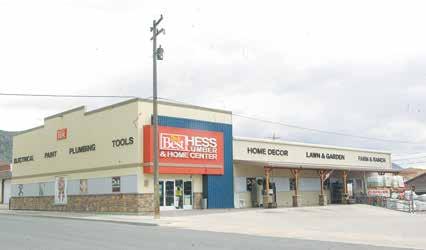
FOOD VENDORS
Taste of Wales (cookies, breads, traditional Welsh foods)
Bamma Wamma’s Pop Shop (drinks, treats)
Fish-On (fish and chips)
Funtastic Lemonade and Italian Sodas (lemonade, sodas, popcorn)
Iron Door Smokehouse Grill (pulled pork sandwiches, teriyaki sticks)
K and D Freeze-dried Snack Shack (freed-dried fruit and veggies, candy)
Pita Works Grill (Greek gyros, fajitas, Philly cheese steak)
Sunflour Gourmet Foods (prepackaged food, cinnamon rolls)
Swaffles (waffles on a stick)
The Corndog Company (corn dogs)
The Frozen Cow (ice cream, root beer floats, tomato soup, grilled cheese)
The Hungry Heifer (hamburgers/cheeseburgers, hot dogs, fries, chicken strips)
CRAFT VENDORS
A and T Co. Creations (3D printed dragons, nativity sets, toys, home décor)
Akashic Creations (Welsh dragon sun catchers, seed bedding, jewelry)
Chain Reaction (gold-filled and sterling silver chains)
Diamond Art (diamond art pictures of dragons, flowers)
Edith’s Collective (seasonal home décor, local stickers)
Finely Crafted Baskets (handmade baskets)
Granny Patch Farm (wool-felted dolls, animals, quilts, pictures)
Laser Jewelry and Wood Items (jewelry and wood items)
Life Wise (natural whole food supplements)
Maky Arts (alpaca blankets, sweaters, hoodies, jewelry)
Plexus Amigos (health supplements)
Recycle Wool Handcrafts (recycled wool items)
Renewal by Andersen (custom window and patio door consultations)
Volcano Girls (soaps, scrubs, bath fizzies)
Wood Flags (flags)
9U Baseball Fundraiser (baseball t-shirts and cookies)
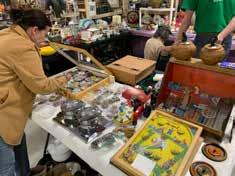
With the recently opened Event Center, Exit 13 Antiques and Collectibles hosts an antique show in the spring and fall. The weekend events primarily include vendors from the southeast Idaho and northern Utah area, selling a wide range of historical antiques, crafts, and collectibles. From furniture to jewelry to classic pop culture items, the show is a curiosity seeker’s delight. Information about upcoming events can be found on the Exit 13 Antiques and Collectibles Facebook page.

In March, the Iron Door Playhouse hosts the Cowboy Poetry and Western Music event, sponsored by the Cowboy Poets of Idaho and International Western Music Association. The two day event brings in cowboy poets and musicians and storytellers from around the region to entertain audiences with the traditional arts of the western lifestyle. Event details can be found by calling the Iron Door Playhouse at 1-208-766-4705.
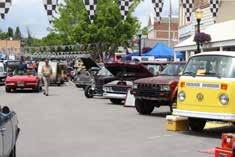
For the last 32 years, the first week in June has been the traditional weekend for the Malad Car Show. The show, which awards
prizes in a number of categories covering the range of decades and vehicle types, draws in participants and visitors from all around the west, and even farther flung places. One of the awards given out is for “Longest Drive,” and is sometimes awarded to an attendee from many states away. From restored classics dating back to the 20s to “Modern Marvels,” anyone with a love for the world of cars, motorcycles, campers, and trucks will find something amazing. Street vendor trucks are on hand, and the event is located on Main street, near the Pizza Stop and Malad Drive-In, and the American Legion building for a cold drink.
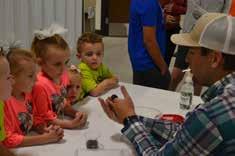
With the construction of the Event Center, the University of Idaho Agricultural Extension Office and 4-H program have a more permanent home. This has allowed for ongoing classes and events for the community, but also events that are open to the public. Throughout the year, the Extension Office hosts events such agricultural education classes, Ag Expos, and kid-focused fun like the “Bugstravaganza.” The office can be contacted at 1-208-766-2243 for information about events.

One of the biggest holidays of the year in Oneida County is Independence Day, which is celebrated with 2 days of events, including a children’s parade and street dance on the 3rd, and a full range of events on the 4th itself, culminating in a spectacular fireworks show. The City Park is generally filled with throughout the day, following the annual Search and Rescue Breakfast and DYW sponsored fun run at daybreak, and the large parade in the early afternoon. During the middle of the day, the Iron Door Playhouse hosts an old-fashioned melodra-
ma indoors and out of the sun. A variety of vendors, musical acts, kids games and races, a water balloon fight, the annual Old West “shootout,” and the always popular Malad’s Got Talent Contest are recurring highlights. As of last year, axe throwing, kickball and softball tournaments, and a homerun derby were added to the mix. The specific schedule of events can be found on the city’s website or inside the June editions of the Enterprise.

Another longstanding tradition are the pari-mutuel races held at the Fairgrounds. This year’s races will be held on July 27 and 28, August 3 and 4 and 10 and 11. Food vendors are on hand for the event, and a beer booth is run by the American Legion. For some fun betting action, or just to enjoy the thrill of the race, the day is always a good time.
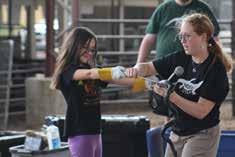
The Oneida County Fair is a chance for everyone from kids to seniors to show off their skills. The Open Class contests include quilting, knitting, crocheting, canning, baking, painting, woodwork, photography, and other arts and crafts. Livestock judging and demonstration events fill the week, with everything from the marquee beef, pig, sheep, and goat judging to poultry judging, dog handling, 4-H demonstrations, and a range of horse events inside the arena.
In addition, the fair promises games and activities for kids throughout the week, a night of Motocross, team roping and branding, a musical performance or two, and additional attractions such as the Scales and Tails reptile show. Food vendors, special events, Lazer Tag and bounce houses are also onhand.
For more information on the Fair schedule, you can call 1-208-766-4706. The Fair is scheduled for Aug 12-17.

Rodeos are a big part of the local scene, with The Oneida Cowboy Classic and Family Fun taking place during the Fair (August 12-17), and the Stone/Curlew Rodeo (July 23 and 24) highlighting the year. From highly skilled professionals to the Family Fun Rodeo, anyone with a love for the sport should put it on their calendar. Information can be found by calling 1-208-766-4706.

In late December, the annual Christmas Light parade adds a festive glow to downtown as local floats drive a circuit around the downtown area, after which a winter fireworks show and bonfire warm everyone back up at the firestation. New to last year, an LED light display set to Christmas music also brings a modern twist to the old tree lighting tradition. The show runs during the weeks leading up to Christmas.

The Interfaith Council puts on a Live
Nativity program several times during December. The event features a reading of the story of the nativity, enacted with the help of local youths in the roles of Mary, Joseph, the wisemen, and the shepherds. A choir of “angels” accompany the program as the story progresses. Animals from local ranches are used to add a realistic backdrop to the outdoor stage. The Interfaith Council, a non-profit which seeks to unify the community through faith, hosts other events throughout the year, including lunches and musical performances. Information about events can be found on the “Oneida County Interfaith Council” Facebook page.
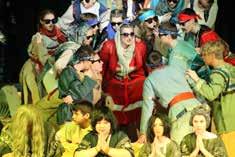
the local PTO, but it also brings in visitors from around the region.

In 2021, the Oneida County Library was named “Library of the Year” for its contributions to the community. Over the course of the year, the Library offers a variety of programs for both kids and adults. Adult education classes on various topics such as “zeroscaping,” personal history writing, and
cabins that are among the oldest in the state. In addition to the historical architecture, the facility also includes an active farm, playground, stage, and space to accommodate hundreds. The spring festival celebrates the new spring animals, allowing kids to interact with them while learning about farm life. The fall festival celebrates the harvest, and includes interactive demonstrations of wool carding and spinning, metalwork, apple juicing, and much more.
Samaria also participates in the Fourth of July and Welsh Festival events.
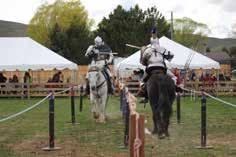

One of the outstanding features of Main street is the Oneida County Veterans Memorial. Just down the block from the historic American Legion building, the Memorial contains the names of all the servicemembers from Oneida County who have served in the armed forces branches from as far back as records could be located up to present. The moving memorial is a somber and
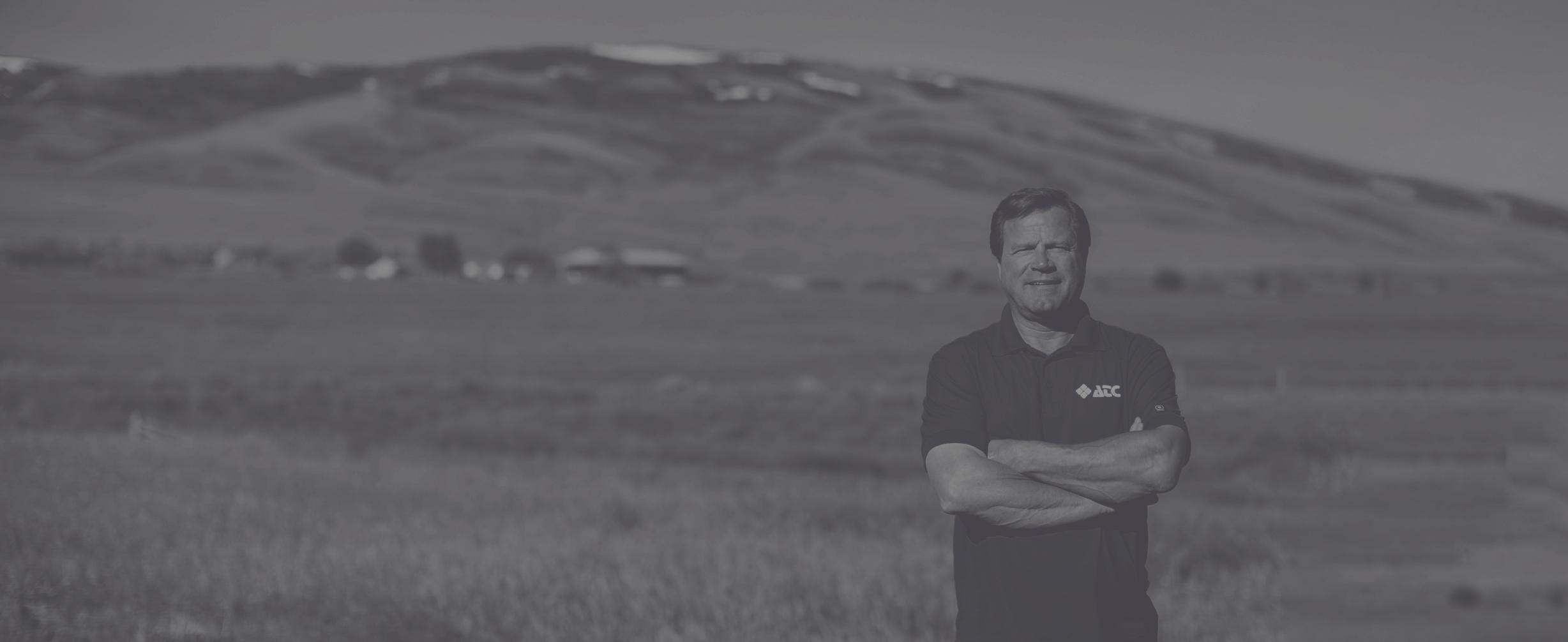











Wales as a distinct culture and nation. Bob Crowther will describe how the Welsh kept their language, culture, and traditions alive through the use of the Welsh Bible. After several decades of English being the only legal language in Wales, Welsh is once again taught in the schools of Wales.
Two Welsh Bibles will be on display at the Fireside. One was presented to the Oneida County Library by Lucile Harrison on behalf of the Malad Presbyterian Church. The other was given to the Malad Valley Welsh Festival by the Garden City Idaho Historical
The Fireside will feature harp music as the harp is the traditional instrument of Wales. Refreshments will be served.
put the relationship we have with people
while keeping it affordable.
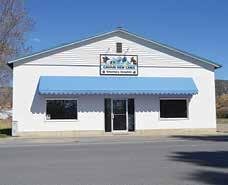


One of the highlights of the Malad Valley Welsh Festival is the display of family trees, census records, and other documents related to some of the earliest pioneer families in Malad Valley. The displays will be in the cultural hall of the 2nd Ward Church throughout the Festival on Friday and Saturday, June 28-29, 2024. Attendees often find new relatives through the displays.
Two new pioneers to be featured this year are Gomer Hughes and David Jenkins. The other families are the following:
Benjamin Nephi Adams
William Clark
Daniel Daniels
Thomas Daniels
Richard Jenkins Davis
Winnifred Lloyd Roberts Evans
Benjamin D. Evans
Edward Davis Evans
Edward Jones Evans
William Thomas Griffiths
Gomer Hughes (new)
David Jenkins (new)
James Evans Jones
Morgan T. Jones
Richard Thomas Jones
William Hughes Jones

Thomas Parry
Daniel Evans Price
John Price
John Evan Price
Thomas William Richards
Benjamin Thomas
Frederick William Thomas
William Howell Thomas
Daniel Tovey
John Jones Williams
William W. Williams

Visitors to the Malad Valley Welsh Festival this year will have the opportunity to see a model of the USS Idaho, the U.S. Navy’s newest submarine. Recognizing that a nuclear submarine is not very Welsh, this will be the only chance for the USS Idaho model to be displayed in Malad. The float carrying the miniature submarine will be on display at Malad City Park on Friday, June 28, from 9:00 – 5:00.
The $2.6 billion Virginia-class submarine is the 26th vessel of its kind to be built.
The ship is 377 feet long, weighs 8,000 tons, and is four stories tall and four stories wide. The interior of the submarine will be decorated with pictures of sites in Idaho to remind the sailors of the namesake state.
The submarine warship was formally christened on March 16 at General Dynamics Electric Shipyard in Groton, Connecticut, where it was built. At the ceremony, ship sponsor Terry Stackley christened the ship in the traditional manner by breaking a bottle on the hull. However, the USS Idaho Commissioning Committee wanted the christening to be unique to Idaho. The
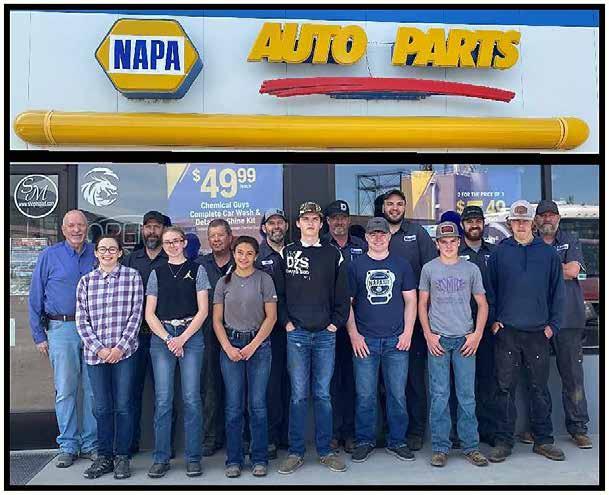
bottle was not full of champagne but full of water from four of Idaho’s lakes: Lake Pend Oreille, Payette Lake, Henry’s Lake, and Redfish Lake.
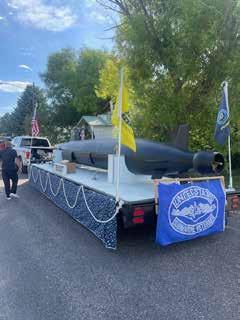





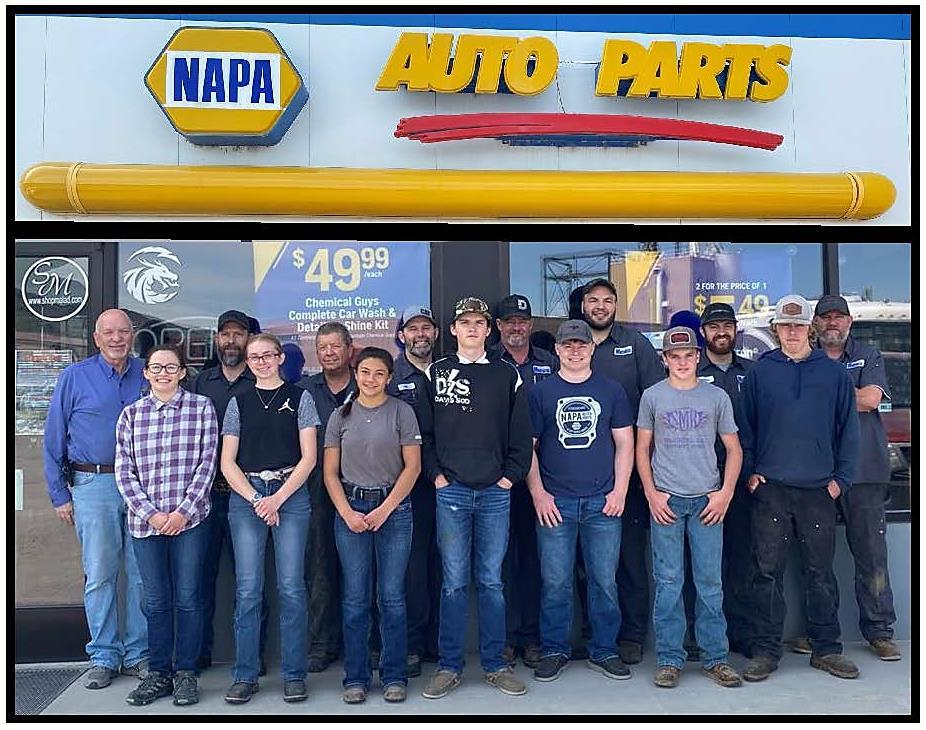




• 21 and older
• Smoke Free Vapor Free
• Lottery
• Beer and Wine from Idaho Wineries
• Come in and try our fun menu
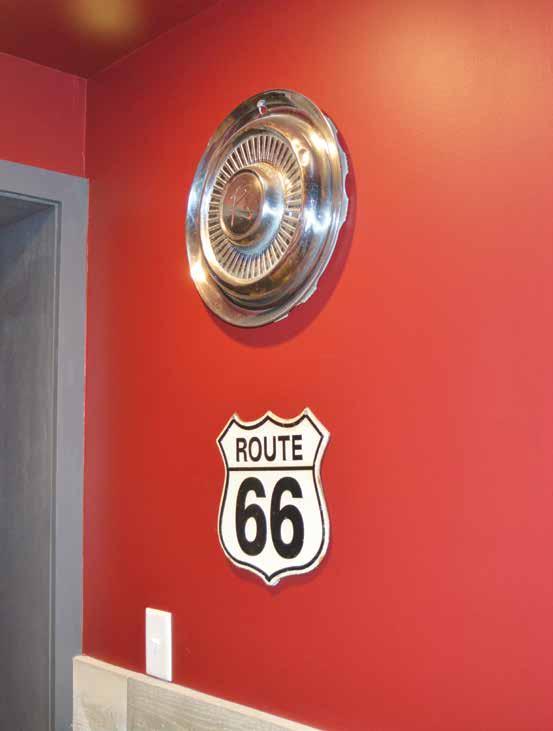


~ Separate Side Entrance to Lounge ~ Call for “to go” orders: 208-541-5518
Open Daily 11:00 a.m. to 10:00 p.m.

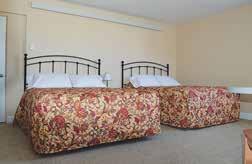
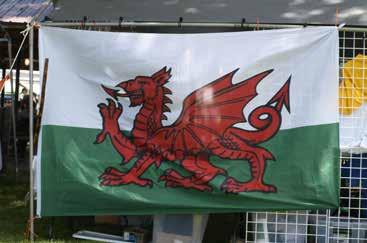
General Festival Chair: Jean Thomas
General Festival Co-chair: Dotty Evanson
Secretary/Treasurer: Roxanne Albretsen
Fund Raising/Grant Writing: Jean Thomas
Publicity: Jean Thomas, Brandon Hall
Culture Presentations: Lucie Washburn, Jean Thomas
Poetry Competitions: Mary Alice Telford, Annette Elcock
Fiction Competition: Lucie Washburn
Youth Art Competition: Joan Hawkins
Concerts: Helen Ward, Jean Thomas
Outdoor Music: Sheila Hadden
Wales Photo Display: Bob Crowther
Family History Displays: Sarah and Rex Robbins
Heritage Games: Kathy Atkinson (MMS MathCounts)
Kids’ Activities: Crystal Kimberling (OSD After-School Program)
Wagon Tours: Monte and Bonnie John
Festival Photographer: Lloyd Bush, Brandon Hall
Hosts and Hostesses: Paula Hannah
Information Booth: Irene Alder (MHS Dragonettes)
Craft and Food Booths: Hailee Hanks, Kelley Neal, Roxanne Albretsen
Welsh Country Store: Alyce Lewis
Taste of Wales Booth: Shantel Tavoian (MHS FCCLA), Samaria Heritage Square
Technology: Gavin Price
Facilities Set Up/Tear Down: Tony McClain, Bill Lewis (BSA Troop #1776)
Liaison with Museum: Kristle Jensen
Liaison with Samaria: Luke Waldron
Liaison with Oneida Quilters: Sharon Harris
Liaison with LDS Church: Cory Daniels, Steve Daniels
Liaison with Presbyterian Church: Tony Werk
Webmaster: Sarah Sayler
In the rolling green hills that seemed to not end Were families: Jones, Davies, Roderick, and Reese. These were among the best you will ever befriend, Along with Williams, Hodge, Price, Morse, and Preece. These were some of my ancestors coming from Wales, A country on the Celtic Sea.
I’m learning their stories and capturing the details From the Great Orme Mines to Swansea.
They worked in the coal mines to earn their keep; They started to work when they were still young. The mines where they worked were cold and deep. The coal dust would seep into their lungs. They were known as colliers; in the mines they would go. Their wages were meager at best. When they would get hurt or their lamp oil was low, They would finally get to go home and rest.
I enjoy the food that my ancestors would eat: Leeks, bara, Welsh cakes, and sausage.
The stew was lamb cawl, which was made with lamb meat
Because with sheep there was never a shortage.
Beginning in 2017, the Malad Valley Welsh Festival honors the best poet in the Adult Poetry Competition by chairing the Festival Bard at the Finale program. The Bard will preside at the next year’s Festival and have the honor of sitting in the Malad Valley Bard’s Chair.
The tradition of chairing the bard began in the 1100s when groups of traveling bards (poets) would congregate in Wales to entertain each other with songs and poetry. In 1176 Lord Rhys invited poets and musicians from all over Wales to a grand gathering at his castle in Cardigan, where a chair at the Lord’s table was awarded to the best poet and musician, a tradition that continues today.
The modern eisteddfod (meaning “to sit together”) evolved from its ancient beginnings and has been held every year in Wales since the early 1800s except for 1914 and 1940 due to the World Wars. The Gorsedd of Bards was formed in 1819 as an association of poets, writers, musicians, and artists. Its members are known as dru-
No matter the work or the shortage of food
There was always a smile on their face
As they sang the songs that helped them feel good, To a Welshman hard work was not a disgrace.
The land of my fathers is loaded with castles, And the symbol of Wales is a dragon.
I often wonder with all the hassles
Why they would trade all they had for a wagon.
They suffered a lot on the trail coming West; Some even contracted malaria.
But their trail would end in one of the best In a community known as Samaria.
My mom taught me to search out my history
And to share the things that I find.
She didn’t want the past to remain a mystery, So I’m trying to do what I was assigned.
I’m grateful for the examples set by my ancestors, They would share whatever you need.
To them we were all considered Brothers and Sisters.
Wales was a land of kindness indeed!
ids, hearkening back to the pagan history of Wales when druids were the religious leaders of the country.
Every year at the Welsh eisteddfod, the winner for best long poem receives an ornately carved chair as the coveted first prize. All poems must be written in the difficult Welsh language and in the Welsh poetic form. Pageantry and tradition are part of the Chairing of the Bard with the Archdruid waving his 9-foot sword over the winning poet. The winner of the best poem in free meter receives a crown, and the winner of the prose competition receives a medal.
The Malad Valley Welsh Festival is not an eisteddfod although music and poetry are major parts of the Festival. The Archdruid is replaced by a Knight of the Festival, who escorts the winning Bard to the stage. The beautifully carved chair was donated by Bob Crowther; Shawn and Roxanne Albretsen and Shannon Evanson carved dragons and created the other designs that make it unique. Unlike in Wales,
the Bard’s Chair remains on display in City Hall after the Festival. The Bard receives a medal and presides at the next year’s Festival from the Bard’s Chair.
The Patsy Price Scott Poetry Prize is named for a poet who lives her entire life in Malad Valley and told stories about her early life through her poetry. Her family established the Prize after Patsy died a few years ago. The winner of the Prize receives a Welsh-themed decorative plate.
Blaine Scott, the 2023 Bard of the Festival, is the son of Patsy Scott and learned much about writing poetry from his mother. He will preside at this year’s Festival. New this year will be the Bard’s Circle, a group to which all past Bards belong. Past Bards will recite original short poems based on this year’s theme of DRAGONS. Past Bards are Jan Crowther Myers (2017), Dotty Evanson (2018), Cory Webster (2019-2021), and Lamonte John (2022).
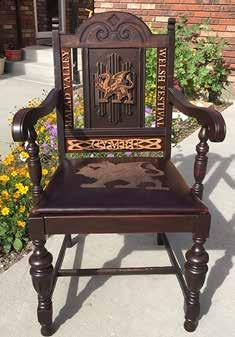
• Rodeo Queen Contest June 14
• Pari-mutuel horse races July 27, 28, August 3, 4, 10 & 11
• Oneida County Fair August 12-17 Judging and Entries, Open Class, Vendors, Kids’ Activities Daily, and Rodeos
• Horse Pulls and Small Fireworks Show August 12
• Team Roping, Hypnotist August 13
• Team Branding, Barnyard Party, Live Band - Rough Stock August 14
• Oneida Cowboy Classic Rodeo August 15
• Oneida Cowboy Class Rodeo and Scales & Tails August 16
• Oneida County Family Fun Rodeo August 17
Some interesting and amusing items were found in the 1938 edition of The Idaho Enterprise regarding Oneida County and Malad City.
• Oneida County is 26th in area among Idaho’s 44 counties.
• Teachers’ salaries in Oneida County in 1887 were very meager. Among the lowest was one teacher who received $60 cash and board for six months. Another received $50 cash and board for nine months.
• Following is the exact wording of a resolution passed by the Board of County Commissioners in 1866:
“Whereas there has as yet been no desks furnished for the District Clerk, County Clerk, Sheriff or Treasurer; and whereas the desk provided for the county auditor is sufficiently large to accommodate each of the above named officers, it is therefore ordered that each of the above named officers be allowed equal use of said desk in the Auditor’s office for depositing their books and papers until such time as suitable desks are furnished.”
• When Oneida County consisted of most of southeastern Idaho, court terms at Malad were lengthy; and the only occupation of some citizens was “sitting on the jury”.
• The Idaho Enterprise published at Malad and established in 1879 is one of the oldest weekly papers in Idaho. The paper was started at Oxford by J.A. Straight and was moved to Malad in 1882.
• Malad’s early history was somewhat turbulent. There were many stage robberies, a few murders and one lynching.
• In the Oneida County courthouse were argued the early irrigation suits, which have become precedents for Idaho’s irrigation decisions. Senator Borah was among many prominent Idaho lawyers who appeared in suits here in the early days.
For more information contact Diane Skidmore at 208-766-4116 ext 114, or any board member Chairman Ken Moss Jr., Vice chair John Hardy, Todd Thomas, Lacey Clark, Eric Eliason, Shanae Blaisdell, Hugo Ramos
• The first white child born in the Malad Valley was Emmeline Eliza Waldron, daughter of Benjamin and Emmeline Waldron, born October 9, 1856 at what was then known as Oregon Springs (Old Fort). David R. Thomas, son of Mr. and Mrs. Benjamin Thomas was born on September 30, 1864, the first white child born in what are now the city limits of Malad. The first white girl born in the section that is now Malad City was Laura McAllister, daughter of James and Elizabeth McAllister who was born on September 6, 1865.
• The last division of Oneida County was in 1913 when Franklin and Oneida counties were created.
• In 1866, the county seat of Oneida County was brought to Malad City from Soda Springs.
June 28 - 30, 2024


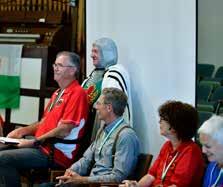
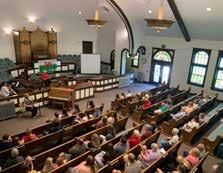
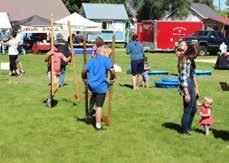

As mentioned elsewhere in this publication, Colen Sweeten, Jr. was one of Oneida County’s most famous and well-loved residents. Raised in Holbrook and attending school in Malad, Colen was a farmer, poet, historian and most importantly, “character.” For many, he captures the slightly irreverent but always thoughtful spirit of the valley. He was a noted speaker and historian but the role closest to his heart was that of Cowboy Poet. He was a member of the Cowboy Poets of Idaho and Utah and published five books of poetry. He received many awards for his work including the Idaho "Governor's Millennial Award for Excellence in the Arts," in the year 2000; the Idaho State Historical Society's 2005 "Esto Perpetua Award" for outstanding accomplishments in preserving Idaho's heritage; the American West Heritage Foundation's 2004 "Pioneer Skill Preservation Award;" the Cowboy Poets of Utah 2006 "Pioneer Heritage Award" and was nominated for the National Commission on the Arts "Award for Excellence in Literature."
Printed here is his poem titled “Malad”:

Where the sun breaks over the mountain As close as your window sills, Then at the close of day, it fades away Behind the western hills.
Where your friends are only a whisper away, And your enemies don’t exist; Where they judge a man by what’s inside And not for the schooling he’s missed.
Where the population stays the same While the traffic comes and goes, And the cemetery’s the only part of town That ever really grows.
Just a spot on the map, a turn in the road, Just a light for the traveler to see; A place where you feel that livin’ is real, Just the right kind of place for me.
Colen Sweeten, Jr.
• Full or Self-Serve Copies
• Full Color Copies
• Laminating - Roll or Sheet
• Comb Binding
• Fax and Scan & E-mail 100 E. 90 S. Malad Open Mon. - Fri. 9 a.m. - 2 p.m. 208-766-4773
The earliest records of the ONEIDA PIONEER MUSEUM date back to 1935 when Miss Hattie Morgan collected her own mementos and, with the help of the Native Daughters of the Idaho Pioneers, put together a collection of artifacts and antiques and displayed them in an old cabin on her property. It was known as the “Relic Room.” When the cabin was torn down, the relics were stored in basements and sheds. In 1964, as part of the centennial celebration of Malad City, the Museum came back to life. Spearheaded by Mrs. Annella Jones Price and the NDIP, the Museum grew in scope and variety and in the ensuing years was housed in several different places.
At last, in 1992, the Museum found a home in the R.B. Davis building in downtown Malad City. Built in 1914 as a drug store, the R.B. Davis building had a boarding house on the top floor, a variety and drug store on the main floor, and a barbershop in the basement. The original pressed tin ceiling and safe are still featured in the Museum. Over the years, the building has housed a Sears Catalog Outlet, a State Liquor Store, a dentist office, and an ice cream parlor. In 2013 the R.B. Davis family deeded the building to the Oneida County Relic Preservation and Historical Society. The Museum now has a perma-
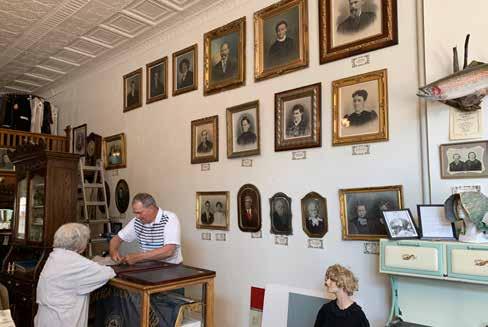
nent home.
The Museum has “the best collection of pioneer-era crayon portraits in the State,” according to a member of the Idaho Heritage Trust. Preservation of portraits is an ongoing project.
Two years ago, the Museum’s large collection of clothing and quilts was eval-

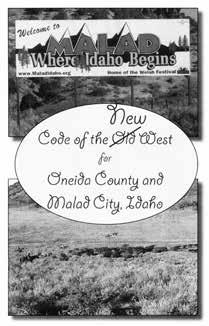

uated, repaired, and preserved. Storage rooms on the top floor now house much of the collection, making it easier to switch out the displays.
One of the Museum’s recent accomplishments is the identification of 20 historic sites in downtown Malad. Historic markers have been placed at most of the
sites, and a self-guiding tour map of the sites is available at the Museum. The Historic Marker Committee has already identified 25 additional sites to be researched and marked.
Work on organizing the Museum’s collection of books, journals, histories, photographs, and other documents will begin soon as another ongoing project.
The Museum accepts donations to its collection as long as the donated item has provenance in Oneida County and is at least 50 years old. Preference is given to items from the pioneer era.
The Museum is governed by a 13-member Board. All Board members serve on committees that oversee preservation projects, maintenance and remodeling of the building, window displays, historic markers, social media and publicity, and the electronic catalog. Each Board member volunteers at least one day as a host or hostess during the summer.
The “Friends of the Museum” solicits funds for the Museum through its annual campaign. Levels of membership are the following:
$25 – Annual
$50 – Handcart
$100 – Covered Wagon
$200 – Stagecoach
$500+ -- Steam Engine

Oneida County boasts a modern meeting and event facility, located at 459 S Main Street next to the Fairgrounds in Malad.
The Event Center features a Wi-Fi enabled conference room with telecommunications capability, large HDMI enabled monitors, and other accommodations.
The Center also features a full service kitchens for food preparation and storage.
The Center requires a $250 deposit. The conference room can be rented for $75/ day, and the full facility for $150/day.
Those interesting in renting the facility can contact Shelby Blackner at 1-435-994-5228.
The indoor arena can be utilized for a range of activities, from catered banquets, to dances and concerts, expositions, athletic events, and others. Since it opened, the arena has been used for award ceremonies, 4-H and FFA projects, the Oneida County Fair, Exit 13 Antique shows, Red Cross blood drives, private weddings and parties, the annual Firemans Ball, the Evening of the Arts fundraiser, the PTO Halloween Carnival, the annual Enterprise Christmas party, and many other large and small scale events.
Admission to the Museum is free although donations are welcome. The Museum is open from Memorial Day through Labor Day from 1:00 – 5:00 p.m. Tuesdays – Saturdays. Arrangements for tours at other times can be made by calling the Museum at 208-766-9247 during its regular hours.
Gloria Jean Thomas, Chair
Bill Lewis, Vice-Chair
Janice Vaughan, Secretary
Julie Willie, Treasurer
Lorna Brignone
Kolton Cox
Dotty Evanson
David Gilgen
Sharon Harris
Joan Hawkins
Marvin Hess
Sarah Robbins
Hailey Sweeten
1) American Legion Memorial Building
78 North Main Street N 42o 11.230’ W 112o 14.701’
2) Dives Furniture Store - now unnamed 17 Bannock Street N 42o 11.169’ W 112o 14.744’
3) Dude Ranch Café
65 North Main Street N 42o11.215’ W 112o 14.720’
11) Lubin’s Confectionery now Critter’s Lounge 72 Bannock Street N 42o11.223’ W 112o 14.843’
12) Malad City Pharmacy now unnamed 44 North Main N 42o 11.191’ W 112o 14.706’
13) Malad Stake Office Building now Iron Door Smokehouse Catering 93 Bannock Street N 42o 11.224’ W 112o 14.870’
16) Presbyterian Church and School now Malad First Presbyterian Church 5 South Main Street N 42o 11.168’ W 112o 14.619’
17) R.B. Davis Drugstore now
18) R.T. Owens Building now Thomas Electric and Furniture 45 North Main Street N 42o 11.198’ W
The Museum’s recent installation of historic markers provide a sense of what the town was like in the past, and how it has changed over time. While few of the buildings on the list are still serving their original purpose, the buildings themselves convey a strong sense of their past. Each of the plaques provides a sense of the building’s original purpose and history over time. Given the relatively small size of Malad’s downtown, a stroll from plaque to plaque shouldn’t be overly taxing on one’s time or stamina. The museum plans to expand the number of sites which are labelled in the future.

4) Evans Co-op Building now Malad Co-op Building
1) American Legion Memorial Building
78 North Main Street N 42o 11.230’ W 112o 14.701’
25 North Main Street N 42o 11.161’ W 112o 14.748’
5) Great Northern Hotel now Hotel Malad
2) Dives Furniture Store now unnamed 17 Bannock Street N 42o 11.169’ W 112o 14.744’
23 Bannock Street N 42o 11.164’ W 112o 14.757’
3) Dude Ranch Café 65 North Main Street N 42o11.215’ W 112o 14.720’
6) J.C. Penney Store now Iron Door Playhouse
59 North Main Street N 42o 11.212’ W 112o 14.724’
4) Evans Co-op Building now Malad Co-op Building
25 North Main Street N 42o 11.161’ W 112o 14.748’
7) J.N. Ireland Bank now Malad Co-op Building flat iron section on Bannock Street N 42o 11.162’ W 112o 14.729’
5) Great Northern Hotel now Hotel Malad 23 Bannock Street N 42o 11.164’ W 112o 14.757’
8) J.N. Ireland Family Outhouse TBD
6) J.C. Penney Store now Iron Door Playhouse 59
9) Jones and Toponce Hardware Store now unnamed 15 Bannock Street N 42o 11.163’ W 112o 14.741’
7) J.N. Ireland Bank now Malad Co-op Building flat iron section on Bannock Street N 42o 11.162’ W 112o 14.729’
10) LaGrande Dance Hall now LeGrande Aqua Plunge 77 North Main Street N 42o 11.237 W 112o 14.720’
8) J.N. Ireland Family Outhouse TBD
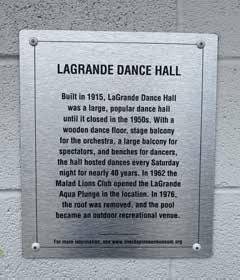
14) Oneida County Courthouse 10 Court Street N 42o 11.188’ W 112o 14.641’
9) Jones and Toponce Hardware Store now unnamed 15 Bannock Street N 42o 11.163’ W 112o 14.741’
15) Presbyterian Church Bell 5 South Main Street N 42o 11.173’ W112o 14.618’
10) LaGrande Dance Hall now LeGrande Aqua Plunge 77 North Main
19) R.V. Daniels Drug Store now Allen Drug (south parking lot)
11) Lubin’s Confectionery now Critter’s Lounge 72 Bannock Street N 42o11.223’ W 112o 14.843’
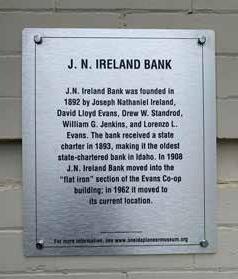
20) Tithing Granary now abandoned building behind Hotel Malad N
12) Malad City Pharmacy now unnamed
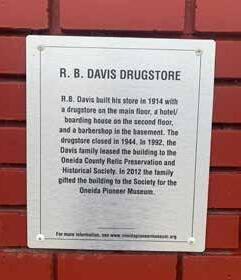
As the 13th largest state in the U.S., Idaho produces 72 types of precious and semi-precious stones. Some of these stones can be found nowhere else in the world, which is why our great state is known as The Gem State.
Population: 1,896,625
Land Area: 83,557 square miles
Capital City: Boise
Highest Elevation: 12,662 feet, Mt. Borah Lowest Elevation: 738 feet, Lewiston, Idaho
Water Area: 823 square miles
River Miles: 3,100 miles, more than any other state
State Flag and Seal: A silk flag, with a blue field, 5 feet 6 inches high, 4 feet 4 inches on pike is bordered by gilt fringe 2 1/2 inches wide, with the State Seal of Idaho in the center. The words "State of Idaho" are embroidered in gold block letters two inches high on a red band below the Great Seal. It was adopted by the 1907 legislature. The state seal was designed by Emma Edwards Green.
State Flower: The Syringa (Philadelphus lewisii)
The syringa was designated the state flower of Idaho by the legislature in 1931. It is a branching shrub up to 12 feet tall
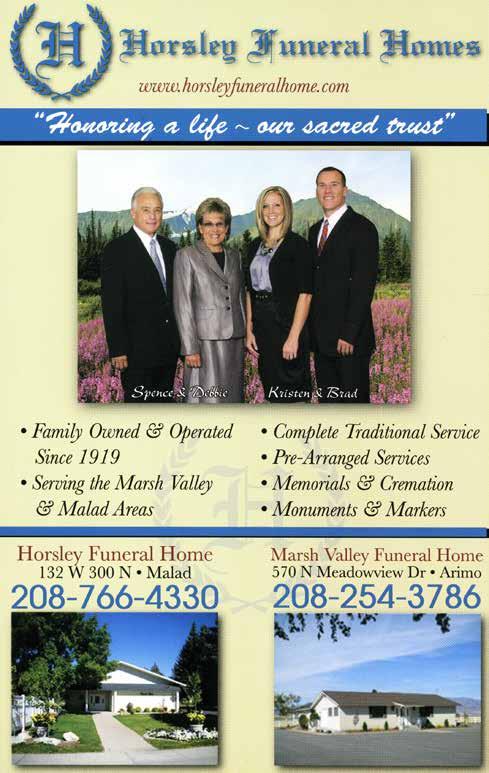
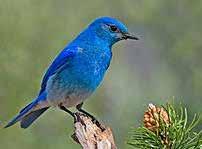
with clusters of white, fragrant flowers that bloom in late spring to early summer. The blossoms are similar to the mock orange, have four petals, and the flowers grow at the ends of short, leafy branches.
State Bird: The Mountain Bluebird (Sialia arctcia)
The mountain bluebird was adopted as the state bird for Idaho by the state legislature in 1931. The Bluebird is about seven inches long, has an azure blue coat, and a blue vest with white under-feathers. The mother bird wears a quiet blue-gray dress and usually lays six or seven blue-white eggs. The Bluebird’s nest is usually built in a hollow tree or in a crevice. The Bluebird is very neat about its home and carries all refuse some distance from the nest.
State Tree: The Western White Pine (Pinus Monticola pinaceae)
Our state tree is probably most notable since the largest remaining stand of this timber in the United States grows in the northern part of Idaho. Tall and slender, the Western White Pine is native to forests of the Pacific Northwest from British Columbia to Montana and as far south as central California. It has blue-green needles, slender cones and can grow to 100 ft. It has many other fine qualities such as straight grain and soft, even texture. The Western White Pine was named Idaho’s state tree in 1935.
State Horse: Appaloosa
The Appaloosa was the first horse breed to be acquired by the Nez Perce tribe around the 1700’s leading to the tribe developing into excellent horsemen and breeders. Settlers began to refer to their horses as “a Palouse horse” in reference to the Palouse River in north Central Idaho. The term evolved from that to “Palousey”, “Appalousey” and finally “Appaloosa”. An Appaloosa Horse Club was chartered in 1938 and has become one of the leading equine breed registries in the world. The Appaloosa was named Idaho’s state horse in 1975 because of its importance to Idaho history.
State Fruit: Wild Huckleberry
State Fish: Cutthroat Trout
State Gem: Star Garnet
State Dance: Square Dance
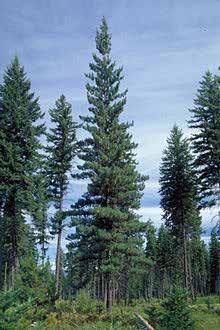
State Motto: “Esto Perpetua” meaning “It is perpetual.”
Unlike many states that became overcrowded megalopolises, in the 120 years since Idaho became a state, it has largely remained clean, un-crowded and unspoiled. Although the state is more than a century old, many people are unaware of several interesting bits of facts concerning this state.
• Gold occurs in some form in nearly all the counties of Idaho.
• Between 1863, when Abraham Lincoln signed the bill making Idaho a territory, and statehood in 1890, the territory had 16 governors, four of whom never set foot in Idaho.
• Idaho is larger in size than the states of New York, New Jersey, Massachusetts and New Hampshire - all combined.
• One of the largest diamonds ever found in the United States, weighing nearly 20 carats, was discovered in Idaho near McCall.
• Idaho is located exactly half-way between the Equator and the North Pole.
• If the state of Idaho were flattened out, it would be larger than the state of Texas.
• The Salmon River in Idaho is the longest river in the United States that is located entirely within the borders of one state.
• Idaho is the only state in the nation bounded by six states and a foreign country - Montana and Wyoming on the east, Utah and Nevada on the south, Oregon and Washington on the west, and Canada on the north.
• The world’s first nuclear power plant is located at the Idaho National Engineering Laboratory near Arco.
When Malad became the county seat in 1866, business picked up. With stage lines and freighters on their way north to Montana gold mines, and new families moving in every year, Malad became a boomtown. In 1864, the Ben Holliday Stage Line went through Malad, headed northwest over Bannock Mountain to Ross Fork. In 1865, the route was changed to run north to the Portneuf Road and on to Ross Fork. Malad pioneers built homes along both routes. Main Street running north and Bannock Street running northwest still mark the old freight and stage routes. The city center is at the fork of these two routes.
This town, settled by Mormons in 1864, received its name from the nearby Malad River. The stream was known among the early fur traders and trappers as “Sickly Waters”, “Sick River”, or “Malad.” There are several versions of just how this came about.
Trappers became violently ill from eating the beaver caught in this stream. It was thought this was caused because the beaver had been on a diet of wild parsnip, common to the area, which did not harm the beaver but was very harmful to those who partook of the flesh of the beaver. Some reports are, the sickness was caused by drinking the waters of the stream near the salty mineral springs between Malad City and the present Utah state line. At any rate, the name stuck. Another river in Idaho, near Bliss, also bears the name of Malad.
In the summer of 1843 John C. Fremont’s party of 39 men passed the spot where Malad City now stands and found a small encampment of Indians who were not very well fed. Fremont commented on the disappearance of the herds of buffalo caused by the trappers and buffalo hunters who had been so active in these valleys since the establishment of Fort Hall in 1834. When Fremont attempted to buy food from the Indians here, they opened their blankets, showing their starved bodies.
In the 1870s, this was a stage station in what was then Oneida County. It was named for Mrs. Elmira Corbett who was postmistress and operator of the Inn Langley.
This Mormon community, on the southern end of the Malad Valley, was called Muddy Creek, after the creek by the same name that went through it, by its first residents. The name came from the heavy spring runoffs that caused the water in the creek to be dirty. In 1891 it was renamed Woodruff, for Wilford Woodruff, one time president of The Church of Jesus Christ of Latter-day Saints.
At one time the Cherry Creek LDS
Ward consisted of four villages, namely, Two-Mile Creek, Willow Springs, Cherry Creek and Henderson Creek. Each village grew up around a spring that flowed from the mountains to the east. No one knows for sure how Cherry Creek got its name, but it is assumed it came from the choke cherry trees that are abundant in the area. Cherry Creek as a settlement dates back to 1865.
In the spring of 1869, when David Jones went to Malad Valley, there were two houses on Muddy Creek and five on Henderson Creek. Henderson Creek was named after a man by that name. Henderson was not a permanent settler, but came up to Malad Valley to raise grain. The first permanent settlers were two men, named respectively Powell and Murdock. The small farming area between Woodruff and Cherry Creek took on the name of the creek that ran through it.
This farming community is located northwest of Malad City. Tradition has it that LDS Apostle Lorenzo Snow had traveled from Salt Lake City, Utah, in 1875 to dedicate a cemetery here. As he was preparing to give the prayer, he asked what name had been chosen. No one knew, but someone suggested Saint John. Everyone agreed, so the name was adopted for the cemetery, the community and the LDS Ward.
Located about twenty miles northwest of Malad City, Daniels is in farming country originally known as the “head of the Malad”.
Nestled at the foot of the mountains on the west side of the Malad Valley, it is said this rural Mormon settlement was named for its location, which commands a fair view of Malad Valley. As the story goes, a Sunday School was being organized on August 31, 1890. At this meeting, the name of the Sunday School and the community was suggested by Sarah Jones, wife of Lewis D. Jones, the first Sunday School Superintendent. She is said to have gone out on the porch of the home they were meeting in and looked over the valley and exclaimed, “Oh what a pleasant view!” Everyone agreed and it has been known by that name ever since.
John Jones, who settled here in 1890, applied for and was granted a post office in 1896, which he named for his daughter Gwen. This early settlement was located between Pleasant view and Samaria.
A Mormon settlement of 1868, located in the southwest corner of the Malad Valley, this community was once bigger than Malad. Early records indicate that the Bible inspired its name -- that it was named after the famed
Good Samaritan because of the love and charity exhibited by its early pioneer settlers. The year that Samaria got its name Elder Lorenzo Snow, then of the Council of the Twelve Apostles, made a trip to the little community to form a Ward, give advice on community and family living, and to form a town site. He instructed Elder Price, one of the settlement’s founders, to make square blocks with wide streets following the pattern set by Brigham Young in Salt Lake City. To beautify the valley he gave each family some seeds that he had brought from Italy to be planted on the west side of each field. The seeds were Lombardy poplar and were supposed to help protect the crops from the hot, scorching sun and wind, and also reach up high enough to receive moisture from the air for the fields.
This rural farming community, in the western end of Oneida County, took its name from its post office and a church leader. Tradition has it that the post office, established here in 1902, was called Holbrook, for Heber A. Holbrook, the local Mormon bishop. The settlement of Holbrook dates back to the year 1878, when a Mr. Joyce arrived here and built a rock house in which to shelter and protect his family from the wild animals and Indians.

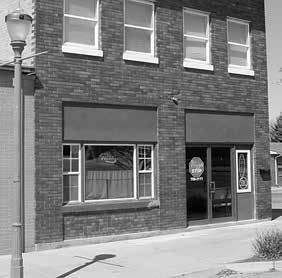
Renelle Skidmore from Stone indicates that her father told her that Stone was named after a Mr. Stone who had some connection with the Postal Service. He was in Stone sometime after 1880 and before 1900. On the 1880 census it is called Carlew, Oneida, Idaho. It was probably supposed to Curlew rather than Carlew. The Curlew Valley consists of Snowville, Stone and Holbrook. Snowville was called Curlew, Box Elder, Utah. To further corroborate this story, she relates that in approximately 1998 she met a man by the name of Ron Stone who lives in Eagle, Idaho. He told her that Stone was named after his grandfather or great-grandfather who came to Stone to set up the Post Office and to be the postmaster.
Lies in Black Pine Valley along Interstate 84. It’s not clear whether the town or the valley first bore the name, which refers to the stands of Black Pine (Pinus Jeffreyi) in the vicinity.
Lies north of Daniels, and was homesteaded in the 1870s. It is still farmland and picturesque area.

The beautiful Malad Valley is nestled in the northern end of the Great Basin and the majestic peaks of the Rocky Mountains. Here, the leisure-seeking family finds wide-open spaces, interesting canyons, bubbling springs, limitless hiking, sightseeing and camping opportunities, including many water sports for outdoor enthusiasts. Sportsmen discover excellent fishing in the streams and seven man-made reservoirs throughout Malad Valley. In the fall, hunters stalk upland game birds, waterfowl, and big game animals. Winter finds the valley covered with snow that sends the snowmobilers off across wide open spaces while, Nordic skiers enjoy cross country trails along Malad Valley’s high canyons.
Oneida County has a variety of recreation trails, some of which can be used year round. Most of the recreation trails originate from the four campgrounds located in the County.
Administered by the U.S. Forest Service, Malad Summit Campground (Powerhouse) is open May through October and is located on the top of the Malad Summit. From I-15, exit off-ramp #22 at Devil Creek Reservoir. Follow Old Highway 191 to the top of the Malad Summit and turn right, drive across the bridge over the interstate and follow the road main road to the Summit Campground. It offers 9 single units, 2 double units with 1 group site. Water and restrooms are available. In this area you will find, besides a short scenic drive, trails for hiking, mountain biking, horseback riding, and ATVs. This is also a good area for wildlife viewing and bird watching.
Third Creek has a group area administered by the Forest Service, which is open May through October. You can reach Third Creek by taking the second Malad exit, #17, to the Deep Creek road (Weston) where you turn
right off the exit. Follow the Deep Creek Road (Highway 36) to Third Creek. Turn off onto the Third Creek Road and follow the road, basically to the end. An area is available for camping, and from this area, there are many trails available for horseback riding, hiking, ATV’s and winter sports.
Another campground in Oneida County administered by the Forest Service and open May through September, is the Curlew Campground by the Stone Reservoir where there is tent and trailer camping with picnic tables, toilets and drinking water available. The area can be reached in two ways: (1) Take the Snowville, Utah, exit off I-84, northwest of Tremonton, Utah. Go north on paved highway approximately 6.5 miles. Turn left (north) at the Curlew Campground sign and go another .5 mile to the campground. (2) Take exit 13 (Malad City) from I-15. Follow the street off
the exit to the stop sign. Turn left and take the next right. Follow this road (Highway 38) to Holbrook, Idaho, which is 24 miles west of Malad City. Turn south and drive 7.5 miles on paved highway, turn right (west) following the same highway and go 1.7 miles to the Curlew Campground turnoff. Motor homes can make it easily. Besides camping, the area is open to ATVs, biking, bird watching, wildlife viewing, horseback riding, fishing, water skiing, jet skiing, canoeing and fishing. This area is located in a portion of the Curlew National Grassland, where watching the sage grouse is very popular during March, April and May, with the peak season being the middle of April.
The above three campgrounds are all administered by the U.S. Forest Service. Reservations for camping can be made at www.recreation.gov or by calling 877-444-6777.
Dry Canyon Campground is a free camp-
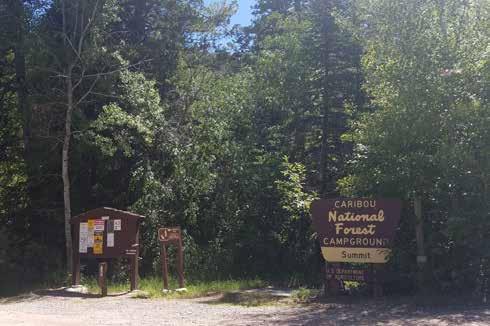

ground located in Oneida County along Skyline Road. It is open in the summer months from June through September and offers restrooms and water. The Two Mile Canyon and Skyline Road offer a scenic drive, with hunting, hiking, snowmobiling, horseback riding and ATVs for recreational use and a great area for viewing wildlife and birds. From I-15 take exit 13 into Malad City. Drive from the exit west to the stop sign and turn left. Follow
South Main Street to where it becomes Old Highway 191. Follow Old Highway 191 to Two-Mile Canyon and turn left (east). Continue to follow this road. The road also can lead to Weston, Idaho, by turning left and going east. This road may not be suitable for car travel.
Campgrounds are also available at Devil Creek Reservoir and small camping areas are available at Crowther’s Reservoir, Deep Creek Reservoir and Daniels Reservoir. These reser-
voir areas are also popular bird watching areas, especially Daniels Reservoir, where during migration you can look for high numbers of waterfowl (Mallard, American Wigeon, and Northern Shoveler) and waterbirds (American Coot, American White Pelican, and Wilson’s Phalarope). In spring, Sharp-tailed Grouse can be seen on leks nearby. Look for Osprey and Red-tailed Hawk (on power poles). A small Great Blue Heron colony in dead trees at the northern end of the reservoir can be found.

The north end of the lake is the best place for birding.
Other popular areas in Oneida County for horseback riding and hiking are Gardner Canyon located in Southeast Oneida County, Dry Creek located off the Deep Creek Road, and trails leading to Oxford Peak, Elkhorn Peak and Kent’s Peak.
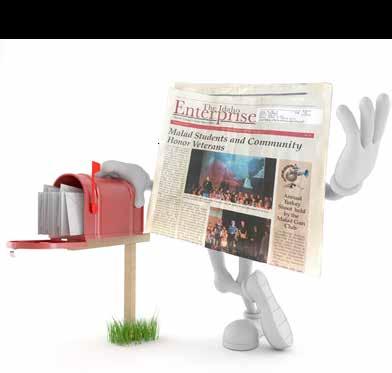
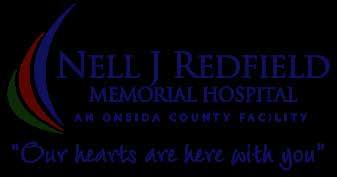

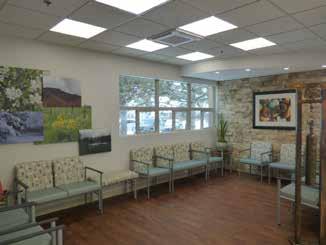
• In-Patient & Outpatient Services
• 24 hour Emergency Room
• Surgery
• Physical, Occupational & Speech Therapy
• Diagnostic Laboratory
• Radiology - X-ray, CT, MRI, Ultrasound, Mammography, Nuclear Medicine
• Sleep Lab
• Manual Manipulation • TelePsychiatry
Dermatology
Ear, Nose, & Throat
Gynecology

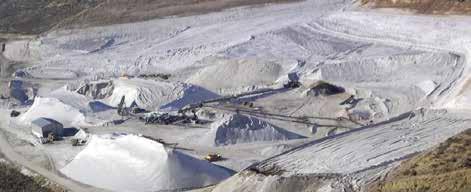
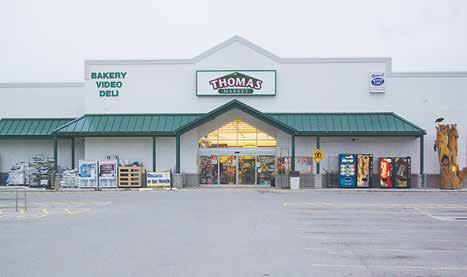
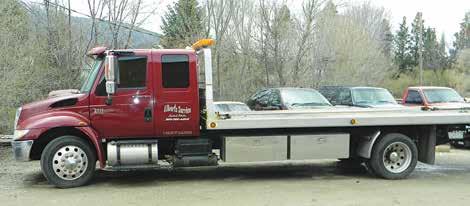


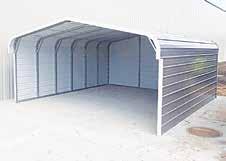

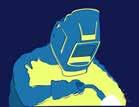








In a poem by Colen H. Sweeten, Jr. entitled “Malad”, he notes the following:
“Where the population stays the same
While the traffic comes and goes, And the cemetery’s the only part of town That ever really grows.”
That may be true. While it has grown a bit in the last few years, the population of Malad doesn’t grow a lot. Nevertheless, Malad City has purchased additional ground several times to allow for growth at the Malad City Cemetery.
The first city cemetery was started north of Malad City on a little bench near 100 West Street and between 5th and 6th North behind the homes located in that area. It has been stated in some articles that it was moved because it was polluting the water, but other Malad historians believe that the markers were wooden and they burned to the ground and the graves were moved to the new cemetery. However, several residents report that they cannot find those graves of their ancestors in the new cemetery.
Malad City Cemetery
A beautiful spot on the east foothills of Malad City, the cemetery is well cared for and depicts the honor that residents and former residents have for their deceased family and honored veterans. At one time, Memorial Day was one of the biggest holidays in Malad City and surrounding communities. The entire day was usually spent with family members, either at the cemetery or at someone’s home afterward for lunch and visiting. It was a huge reunion of current and former residents. As the adults would visit, the children would run around the cemetery, with one of the most important sites to visit, the L.L. Evans Memorial, which is a chair. We are sure L.L. Evans enjoyed these visits from the little children! In honor of Memorial Day each year, the American Legion Ernest W. Jones Post 65 plans a program complete with military detail. It is held in the center of the cemetery with a speaker and special musical numbers. Included in the ceremony are the presentation of the colors, a firing detail and the playing of “Taps”. This same ceremony is presented by the Malad American Legion at all of the local cemeteries in Oneida County, as well as the Portage, Utah Cemetery and the Plymouth, Utah Cemetery, to honor deceased veterans. Recently, a pavilion and Memorial Bell were added to commemorate veterans and Gold Star families.
The city has an appointed Cemetery Beautification Committee who, along with the city superintendent, continually make improvements to the cemetery. In May of 2011, volunteers working under the direction of the city made a new addition to the cemetery. In commemoration of children who have passed away, the Christmas Box Angel was erected overlooking the Malad Valley. In 2017 a sprinkling system was added.

A roster and map of those buried in the Malad City Cemetery is located at the shed on the north end of the cemetery, making it easy for visitors to find a gravesite.
St. John Cemetery
Located in the community of St. John, most of the early settlers of St. John were buried in the St. John Cemetery. It is not uncommon today for families that have family ties to the community have their loved ones buried in the St. John Cemetery. The cemetery is cared for by residents of the community and is a beautiful, peaceful spot.
Pleasantview Cemetery
The Pleasantview Cemetery is located behind the old LDS Church building in the community of Pleasantview. Again, it was the custom, and still is today, that longtime residents of the community are buried in the community cemetery.
Located west of the village of Samaria, the Samaria Cemetery is populated by those deceased residents of Samaria. The most famous story regarding the Samaria Cemetery is regarding the man with two headstones, Benjamin Waldron. At about twenty-five years of age, Waldron was hurt in a threshing accident that required the amputation of his leg. He requested that the leg be buried, which it was and a headstone erected showing a leg and the inscription “B.W. October 30, 1878.” However, for weeks afterwards, Waldron suffered with much pain, which he believed was caused by the leg being twisted in the grave. Upon his insistence, the leg was exhumed and sure enough, the leg was buried in a “twisted” manner. It was straightened and re-buried. Mr. Waldron reportedly was
Cherry Creek
Built in a beautiful spot in the foothills of southern Oneida County, is the Cherry Creek Cemetery, a pioneer cemetery. People still request to be buried in the Cherry Creek Cemetery. There is no water available for upkeep of grass, but due to the past efforts of the late Cleland Jones and others who helped him, a fence was erected around the cemetery to protect the graves from being broken by grazing cattle.
Another community cemetery for the residents of western Oneida County is the Holbrook cemetery, which is located in the western foothills of Oneida County, west of the village of Holbrook.
Stone cemeteries
then able to rest more peacefully and eventually adjusted to his impairment. When Benjamin Waldron died in April of 1914, his body was laid to rest at the west end of the Samaria Cemetery, far from his buried leg.
Three old graveyards are located in Stone, Idaho. Local resident, Aaron Hill, arranged to have the cemeteries fenced with pole fences to protect the graves. One cemetery has no grave markers and the graves cannot be seen. The other two cemeteries have markers. One holds the remains of “Baby Boy Smith”, the son of Jay and Susan Smith and a grave for the “Goss children”, children of Tom and Edith Goss. A separate cemetery holds the remains of the Baggit family.






